President Xi Jinping’s populist leadership of China, six years on, has been a lesson in the art of mixing flexibility in tactics and rigidity in ideology—alongside the ultimate goal of growing his own power and that of China. Cheng Li and Diana Liang unpack Xi’s domestic and foreign policies and highlight important takeaways for American analysts and policymakers around the world in their search for a more effective approach to China. This piece originally appeared on the Cairo Review.
Conventional wisdom holds that Chinese President Xi Jinping’s domestic governance and foreign policy are ideologically rigid and politically single-minded, incongruent with the reality of both environments. Xi’s doubling down on state capitalism, the abolishment of presidential term limits, Cultural Revolution-style propaganda, the cult of personality, and assertive foreign policy in recent years have all seemed to align with this perception.
However, Xi has blended rigidity in his goals and overarching strategy with flexibility and compromise in his tactics. Although these illiberal trends are undoubtedly central to Xi’s leadership, he has not demonstrated anywhere near the same level of inflexibility as Mao Zedong in policy and has made a number of important accommodations. Examples of this include promoting private sector growth through tax cuts and other mechanisms, opening the business environment for foreign companies, and offering compromises in trade relations with the United States. Equally important, Xi has made efforts to broaden his power base, burnishing his image as the leader of the people by moving away from his previously strong ties with princelings—leaders like himself who come from veteran communist families.
Portrayals of Xi often emphasize his power and authority, overlooking the reality that he faces challenges both at home and abroad. His dominance of the country’s leadership has not shielded him from criticism or pressure, nor has it allowed him to force through his priorities uncontested. An analysis of Xi’s recent strategic adjustments can help reveal where, how, and why he has selected to compromise. Although some might claim that such adjustments stem from Xi’s failure to achieve his goals, this flexibility, in fact, signals a nimble approach to governance. His overall strategic goals may be relatively unyielding, but the tactics he uses to achieve those ends are not.
In analyzing Xi’s conduct, it is essential to first outline the primary sources of pressure he faces. Analysts must examine Xi’s tactical adjustments across the domains of politics, the domestic economy, and international trade—whether driven by pressure from changes in Washington’s perspective on Beijing or internal discontent with Xi’s leadership. Finally, exploring Xi’s approach to policymaking will highlight important takeaways for American analysts in particular and policymakers around the world in their search for a more effective approach to China.
Washington’s New Narrative of Anxiety
The international environment has become a more difficult arena for Xi to operate in, as he himself stated in a number of official meetings early this year. Pundits and government leaders in the United States have increasingly come to view Xi’s priorities—especially in bolstering domestic companies as national champions, embracing authoritarianism in governance, and emphasizing rapid military modernization—to be assertive and threatening to U.S. interests, causing a strategic shift in the narrative on China, which has become more pronounced under the Donald Trump administration.
On economics and trade, Xi’s support of state capitalism and inaction over what many in the United States view as unfair business and trade practices have disappointed supporters of engagement, making way for President Trump to take Beijing to task. China’s support of state-owned enterprises (SOEs), insertion of party branches into private and foreign firms, and the “Made in China 2025” plan are seen as steps backward for the role of the market in China’s economy and in contrast to expectations held around China’s integration into the global market. Frustrations that predate Xi add to this push to compel change. These include the slow pace of market reforms and long-delayed promises on intellectual property protections and market access, which have grated on the U.S. business community, a group that has traditionally played a moderating role in the United States–China relationship. The most hawkish voices on China in the United States argue that China is “taking advantage” of the international trade order and joined the World Trade Organization in bad faith.
Furthermore, China’s splashy economic initiatives abroad heighten U.S. concerns that China is expanding its unfair practices and political influence, tying the economic to the strategic. Large-scale programs such as the Belt and Road Initiative (BRI) have been criticized by foreign critics as “debt trap diplomacy,” in which unsustainable loans and debt distress could allow China to wield influence and extract outsized concessions. BRI has provoked persistent discussion in Washington about the risks of Chinese ascendency and encroachment on U.S. power and global leadership, even reinvigorating conversations about the Quad—a strategic alliance between the United States, Australia, Japan, and India—as a means to counter China’s regional ambitions.
Beijing has also assumed a more confident posture on the security front. Notably, China has adopted a policy of increased maritime activity in the South China Sea by forging ahead with the construction of man-made islands on which it stations military equipment and personnel. This has generated growing concern in Washington over U.S. influence in the Asia Pacific region, the longevity of existing maritime rules, the risk of confrontation over territorial claims, and the status of Taiwan. These anxieties have been compounded by Xi’s repeated narrative of a rising China, to be restored to centrality on the international stage.
Finally, China’s ambitions in science and technology advancement inflame Washington’s fears. Specifically, China’s pursuit of artificial intelligence (AI) and its race to 5G are viewed increasingly as intelligence and security risks by the United States and its allies, undercutting U.S. technological dominance and seizing the spoils of twenty-first-century innovations.
New Pressures from the United States
The sum of these anxieties combined with other particularities of the Trump and Xi presidencies have led Washington to markedly revise its outlook on Beijing. Though far from reaching a new consensus on strategy for dealing with China, Washington has already witnessed a pronounced change in narrative and heard numerous calls to rethink the engagement policy. Just as Xi’s China has adopted new postures and positions in what he calls the “new era,” so has Trump’s America.
As evidence of this shifting perspective, terms like “sharp power” have sprung up to describe Chinese actions that seem to more aggressively pursue soft power. Whereas some regard Confucius Institutes—which teach Chinese language and culture to audiences abroad—as legitimate promoters of goodwill, critics charge that the institutes threaten academic freedom by deliberately avoiding topics the Chinese government deems sensitive. Chinese consular officials are also accused of monitoring the activities and statements of Chinese students studying in the United States under the guise of supporting cultural activities. In these and numerous other examples, the lines between legitimate advertisement and sinister propaganda are often blurry and subject to debate. The growing tension over these boundaries was evident in a speech U.S. Vice President Mike Pence delivered at the Hudson Institute last fall. Pence characterized Beijing as “employing a whole-of-government approach, using political, economic, and military tools, as well as propaganda, to advance its influence and benefit its interests in the United States.” He further accused the Communist Party of China (CCP) of bullying American universities, think tanks, scholars, journalists, and officials into adopting positions amenable to Beijing.
Charges like these have bolstered the U.S. leadership to call for a fundamental re-examination of relations with China, and the Trump administration’s actions in recent years have had a direct and measurable impact on the Sino-American relationship. First of all, the resulting trade war between the United States and China has dealt a blow to the Chinese economy. China’s stock market last year, for example, saw its worst performance since the global financial crisis, losing $2.4 trillion in value, also making China the worst performing stock market of 2018. China’s Gross Domestic Product growth fell to its slowest pace in twenty-eight years, at 6.6 percent according to official government figures. China’s investment in the United States last year was only one-sixth of the previous year and 10 percent of 2016, offering the first hints of a process of decoupling, whereby U.S. and Chinese interdependencies begin to weaken.
On the security and political fronts, Trump has inflicted additional pressure on Xi. American efforts to push back in the Asia Pacific include a renewed commitment to Taiwan—a traditional sticking point for Beijing—and maintaining a naval presence in the South China Sea. Chinese officials and academics have, in a way, acknowledged this increased tension by warning that China may feel pressed to enact countermeasures, which increases the risk of unintended confrontation.
Washington has also moved to limit access to science and technology. The Trump administration has explored imposing visa restrictions on Chinese students studying in sensitive research fields. It has sought to ban Huawei, a Chinese flagship IT company, from the United States and has lobbied allies to do the same. In so doing, the Trump administration looks to undercut China’s science and technology goals and threatens to isolate China unless it plays by U.S. rules. To this effect, Australia has banned Huawei and ZTE from providing 5G technology to the country’s network, and UK authorities have issued warnings about the security risks Huawei poses. Most noticeably, the United States submitted an extradition request to Canada for Huawei chief financial officer Meng Wanzhou, who was arrested while transiting through Vancouver. Meng’s detention, described by Chinese authorities as part of hawkish U.S. efforts to humiliate China’s entrepreneurs and to contain China’s rise, has outraged the Chinese public. It is worth noting that shortly thereafter Chinese authorities arrested two Canadians in Beijing, Michael Kovrig and Michael Spavor, on suspicion of harming China’s national security. These events and the surge of commentary they have provoked illustrate how the relationship between international competition and domestic politics can become blurry and create inter-related pressures.
Growing Domestic Discontent
Even without the external pressure from the United States, the Chinese leadership still confronts numerous domestic challenges. The U.S.–Chinese trade war has spurred complaints that Xi misjudged China’s economic clout, overplayed his hand, and bungled negotiations with Trump’s team. Chinese private entrepreneurs and the middle class share many of the same concerns as foreign companies in China: they are frustrated that promises Xi made in 2013 to reform and open markets have stalled. They complain about the rapid advance of state firms at the expense of smaller, private ones. Whereas economic growth may have once mollified these domestic critics, China is experiencing a slowdown, resulting in part from economic structural change but amplified by the trade war.
Xi’s prominent foreign aid programs, which straddle the nexus of economic and strategic policy, have also drawn domestic critique. BRI and undertakings like the Forum on China–Africa Cooperation are criticized as ill-conceived projects that misallocate state funds. Others argue that China remains “too poor” to be giving and lending so generously. The narrative of a resurgent China has been insufficient to fully persuade the public to support Xi’s initiatives.
Moreover, Xi has come under fire for pursuing strongman politics and abandoning the model of collective leadership that was introduced by Deng Xiaoping and practiced under Xi’s immediate predecessors Jiang Zemin and Hu Jintao. Xi’s cultivation of a personality cult has aggrieved both the Chinese political establishment and liberal intellectual circles, who see the trend as reminiscent of Mao’s era. Also, Xi’s abolishment of presidential term limits last spring was widely decried for reversing succession norms, already a sensitive area given Xi’s other actions in pursuing power. China’s political elite no longer see a clear mechanism either for political succession or for balancing factional power. They are joined by members of China’s business circle in arguing that Xi’s efforts to concentrate power confirm and fuel Western fears about Chinese authoritarianism.
Even the broader public, which has generally been receptive to Xi’s populism, has begun to put pressure on Xi. Despite the heavy hand of censorship, the public has managed to register discontent over a range of governance and social challenges. Recent examples include demonstrations against expired vaccines and food safety in schools, which touch on preexisting frustrations connected to public health practices in China. Though these episodes are not likely to pose existential threats to either Xi or the party, they nonetheless indicate growing public demand for government accountability.
Xi’s Tactical Adjustments
Political adaptation
Since becoming leader of the CCP in 2012, Xi has employed adjustments in policy and public relations in a concerted effort to shore up his popularity and power. Notably, he has strived to position himself as a populist in spite of his elitist, princeling background.
A signature policy of Xi’s first term was a grand-scale anti-corruption campaign—an important task given that public criticism of elite corruption ran high at the time. The campaign conducted 172,000 investigations in 2013 alone, according to China File’s count. In the following five years, it purged 440 senior civilian leaders (vice minister and vice governor level or above) and senior military leaders (major general rank or above), including forty-five members of the 18th Central Committee, on corruption charges. This helped Xi demonstrate responsiveness to a public outcry, rehabilitate the party’s image, and accrue popular support.
Xi also pursued socioeconomic policies to boost his populist profile. Among these were his promise to eliminate absolute poverty by 2020 and his call for green development. Xi’s bold commitment to poverty alleviation builds on the remarkable success of the past four decades of economic reform, which, according to the World Bank, reduced the number of people in China subsisting below the international poverty line from about 800 million people in 1978 to 106 million in 2011, further dropping to about 40 million in Xi’s first term. Meanwhile, Xi’s appeal for green development is a nod to public complaints over air, water, and soil pollution and the environmental degradation that has resulted from China’s rapid economic growth.
Outside of policy, Xi has adopted a more informal, personal approach to the public. In contrast to most previous Chinese leaders, Xi has been seen dining out at ordinary Beijing dumpling restaurants, donning casual windbreakers in official photos, and frequently visiting less developed areas. In so doing, Xi has sought to recast himself as a populist leader and blur his princeling roots.
This reframing of Xi’s identity and distance from the princelings can also be seen in the composition of top Chinese leadership bodies. When Xi was made the general secretary of the party in 2012, his natural coalition at the time—made up of the princelings—saw an upsurge in seats at the expense of the tuanpai, the coalition that his predecessor Hu Jintao led. For example, four out of seven members of the Politburo Standing Committee were princelings in 2012, as compared to two out of seven the term prior. In the beginning of his second term, however, Xi shifted power away from the princelings. He broadened his leadership coalition, promoting his confidants and associates in the provinces and cities where he had served. The number of princelings on the 376-member 19th Central Committee fell by half, from forty-one to twenty.
In addition to a reframing of his identity, this fall also reflects a change in power dynamics. To the extent that Xi has, with the support of the princelings, successfully undermined the power of the tuanpai over his first term, he apparently feels sufficiently secure that he no longer depends on the princelings for support. He can afford then to shift power from the princelings to those more personally loyal to him, which has the added effect of limiting potential princeling competitors.
Although Xi has used these key policy initiatives to secure power, he has also adjusted these policies—or at least their presentation—in light of criticism. For example, Xi has recently indicated that he will be modifying and limiting the anti-corruption campaign’s scale and scope in his second term. This is in part to refocus his agenda toward economic development, and in part to restore governance and growth in light of feedback that officials and entrepreneurs have been intimidated into idleness for fear of being charged by the campaign. Following the Xi leadership’s instruction, China’s Supreme Court judges stated in recent government meetings that the Chinese courts should be restrained in arresting officials and entrepreneurs on corruption charges.
In response to ongoing criticism over the abolishment of term limits, Xi has begun to clarify his intentions. In a speech at a provincial minister-level meeting early this year, he claimed that he has no intention to stay in power forever. Relative to the scale of adjustments Xi undertook in order to secure power and popularity, these statements are perceived by many as mere rhetoric. Both the Chinese public and international community will certainly need to see more concrete moves if Xi means what he said.
Xi’s domestic economic adjustments
Xi has apparently walked back some of his economic policies at home, offering changes that appear more promising than hyperbolic.
One major frustration with Xi’s domestic economic policy has been over the distribution of power between the state and the market. In response to private sector concerns, the leadership has announced its intention to pursue “three-sector paralleled development” for SOEs, private companies, and foreign firms. This should, in theory, restore business confidence for the latter two groupings. The Xi administration has put forward changes to alleviate the financial burden on private firms. According to a Reuters report, Chinese firms are to receive tax cuts totaling $298 billion, as well as a reduction in fees and easier loan access. According to the South China Morning Post, the Xi administration is set to enact measures including a three-percentage-point value-added tax (VAT) cut for manufacturers, a higher VAT threshold for small technology companies, and a reduction in employers’ contribution rates to government pension insurance. Industrial policies to promote science and technology development will remain central to Xi’s economic agenda. However, he has been willing to modify the framework under which private sector growth should take place.
Xi’s foreign economic adjustments
Xi has shown some willingness to engage and compromise on the economic front in response to foreign criticisms. Some of these changes have been on the margins, often with modified or reduced emphasis in language, while others have been substantial changes in practice.
On the trade war—the most prominent case of international pressure—Xi’s team has assumed a style that resonates with Trump. Xi has opted not to match Trump’s bluster but instead has repeatedly dispatched his confidant Vice Premier Liu He, a Harvard-educated financial technocrat, to de-escalate tensions with promises that match Trump’s showman style: big numbers, quick hits, little follow-through. For example, Beijing’s offers to buy 5 million tons of soybeans are aimed directly at Trump’s preferred style of politics, even if the purchases are considered neither sustainable nor likely to have a major positive impact on U.S. producers.
Similarly, China has also adjusted its policy narrative to downplay political intervention in its overseas economic outreach and to, instead, emphasize elements of the international trade order. Chinese officials have voiced China’s commitment to increased market access and more balanced trade with the United States and to limiting or ending public discussion of Made in China 2025. China also recently rubber-stamped a new foreign investment law, which ostensibly addresses forced technology transfers and illegal government interference in foreign business practices—key U.S. business concerns. Again, some critics have dismissed the law’s substance as vague and unlikely to have a material impact, and others have noted that deeper reforms are needed. Such actions are nonetheless a public gesture toward Trump’s negotiating line.
At a minimum, Xi can be credited with some finesse in tactics, at least from the perspective of the Chinese public. He calibrated his response to the changing U.S. environment by continuing his prior policies and maintaining the appearance of a calm, reasonable negotiating party, avoiding any comparison to Trump—who the Chinese public has dismissed as irrational—while also giving Trump some of the easy wins he desires. He has, too, played a combination of hardball and softball in his negotiations with the United States. Though not always satisfactory to Trump’s team, Xi’s offers (some of which may prove to be lip service while others may reflect genuine points of attention) are part of his balancing act with the Chinese public.
Outside of the trade war, Xi has demonstrated some tactical flexibility in revising his economic agenda abroad. For example, in response to concerns raised by foreign critics of BRI, China’s Ministry of Foreign Affairs has begun affirming that BRI will emphasize transparency, inclusiveness, and debt sustainability. In light of American skepticism and anxiety regarding Chinese infrastructure investment in foreign countries, Xi has refocused on courting European Union partners. He recently made visits to Italy and France, with the former becoming the first G7 member to sign onto BRI. Though these adjustments may form a mixed picture, they at least reveal that on a number of economic issues, Xi is open to re-negotiating, repositioning, and even retreating in order to limit discontent and gain the room to then pursue the same strategic objectives. If little else, these moves indicate that Xi is cognizant of the competing interests that he must balance.
A Creep toward Confrontation on Both Sides?
A more nuanced understanding of Xi, his goals, and his selective strategic adjustments should inform Washington’s search for a new strategy on China. Though Xi has earned a reputation for ideological rigidity and the single-minded pursuit of his agenda, he has in fact exhibited capacity for tactical policy adjustment. Moreover, though some of his political strategies have allowed him to accrue power to a degree that represents a sharp departure from his predecessors, this has not made him entirely immune to pressure and criticism.
In light of the select areas in which he has made such adjustments and chosen to mediate criticisms, Xi’s overall strategy can be understood as one that reflects both continuity and change. What remain continuous are Xi’s priorities and goals: that China’s competitiveness, scientific and technological development, and security are paramount and that China become a global power by 2049. What is subject to change are the paths toward those goals.
Xi’s instances of flexibility and responsiveness are important to recognize—not least of all because a more accurate understanding of Xi may illuminate more effective approaches in dealing with China. Yet, these instances should not be interpreted as signaling the plausibility of a dramatic re-orientation of China’s foreign and domestic policies. On issues Xi perceives as central to national security and China’s long-term strategic interests, it is more likely that he will stand firm or double down than retreat. In addition, Xi’s selective adjustments can be further differentiated into substantive offers and rhetorical modifications. Nor has he demonstrated willingness to adjust in all domains. Some of his policies—most notably in repression of social protests and expressions of identity—have been either clumsy or simply brazen.
Traditional sources of tension between the United States and China are not only likely to remain, but also to be heightened by Xi’s pursuit of and insistence on Chinese rejuvenation and Washington’s increasing concern about Xi’s ambition. Topics like Taiwan and the South China Sea are likely to continue to cause security tensions. Human rights and civil rights issues are also not likely to be resolved barring unforeseen coordinated pressure on Xi. Moreover, complicating factors such as the race in science and technology will make managing the China–U.S. relationship a more delicate task.
A clear-eyed view of Xi’s priorities and approach—and not a reductionist or caricatured image that fails by either over- or understatement—should help Washington formulate a smarter, more strategic approach to China in this new era. Analysts and policymakers must identify where U.S. priorities and strategic advantages lie, determine where and how the country is willing to expend energy pushing back on Xi’s agenda, and continue to reach for cooperation with Xi where it is not only possible but necessary. As both countries engage in increasing competition, the United States and China must each bear in mind the consequences of strategic or policy rigidity—real and imagined—or risk a steady, unintended creep toward confrontation.
The Brookings Institution is committed to quality, independence, and impact.
We are supported by a diverse array of funders. In line with our values and policies, each Brookings publication represents the sole views of its author(s).
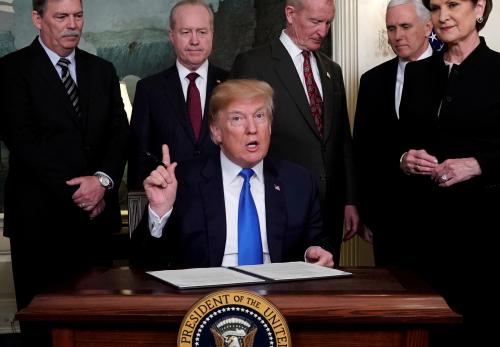
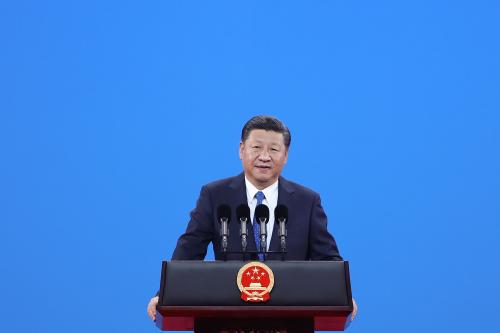
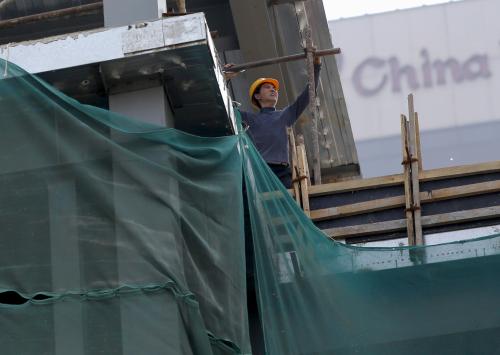
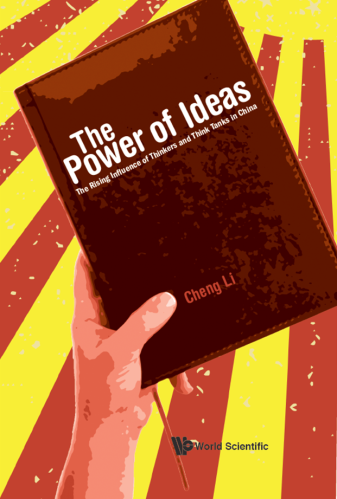
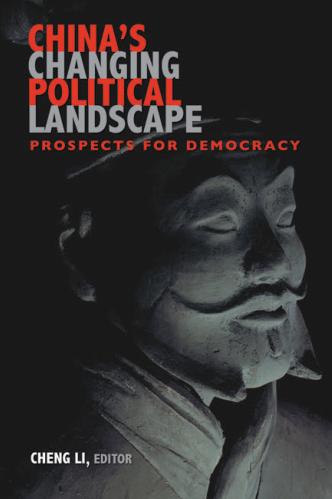
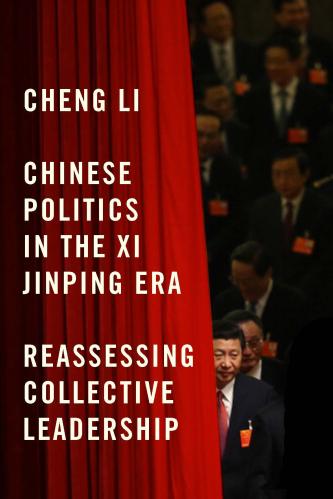
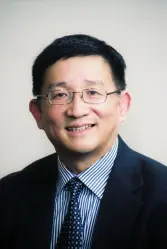



Commentary
Rule of the rigid compromiser
Spring 2019